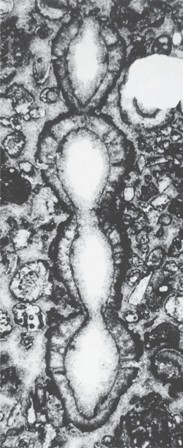Upper Aptian calcareous algae from Padurea Craiului (Northern Apuseni mountains, Romania)
Main Article Content
Abstract
A study of calcareous strata previously assigned to the Barremian-Early Aptian interval in the northwestern part of P?durea Craiului, (Apuseni Mountains), led to the identification of a micropaleontological association indicative of a Late Aptian age. Unequivocal evidence for the Late Aptian assignment of these limestones is the presence throughout the sequence of two orbitolinid species, Mesorbitolina texana (ROEMER) and Mesorbitolina subconcava (LEYMERIE). The most interesting sections are located in the neighbourhood of Subpiatr?, where both outcrops and a quarry facilitated detailed analyses. In this area, the Upper Aptian succession consists basically of three types of macrofacies: 1, limestone with rudists; 2, limestone with Bacinella and 3, limestone with corals, each of them showing several types of microfacies. Bacinella structures are the most common feature in the whole succession, irrespective of the macrofacies. This paper focuses on an algal association that was identified in several levels within the succession. Dasycladalean algae are more frequent, and are commonly found in grain-dominated fabrics (mostly grainstone textures), in association with orbitolinid foraminifera and bioclasts of corals, rudists and gastropods. However, a few species are present only in mud-dominated fabrics (i.e. lower-energy intervals). The dasycladalean association from the Upper Aptian deposits of P?durea Craiului is of special interest, for this group registered a dramatic decline at the Lower Aptian/Upper Aptian boundary, as confirmed by the relative scarcity of the Dasycladales in the Upper Aptian carbonate deposits.
Downloads
Download data is not yet available.
Article Details
Issue
Section
Original Scientific Papers
Authors have copyright and publishing rights on all published manuscripts.

